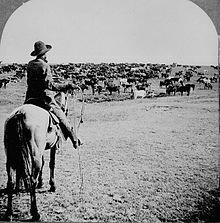
Last week I wrote about feral cattle in Texas before the Civil War. They were the offspring of Andalusian cattle brought to what today is Mexico by Hernando Cortez in 1521. Gradually the cattle migrated north in search of food, water, and wandering, the inherent trait of cattle.
Early records indicate enterprising Tejano stock raisers trailed cattle along the Opelousas Trail to markets in Louisiana and even across the Mississippi River. Slaughter houses located in Jefferson and Liberty, Texas as well as Shreveport, Opelousas, Fayetteville, and Donaldsonville did booming businesses. In close vicinity of slaughter houses were tanneries, saddle makers and boot makers, as well as canneries. Canning beef was new, and many times too much lead was used. But the hides and tallow from the cattle were also valuable for leather, soap, and candles. Tanneries processed the hides before taking them to saddle makers and boot makers.
Along the Texas coast Charles Morgan and associates developed a special steamship by 1850 that carried cattle and horses to markets in Galveston, Sabine Pass, New Orleans, and Mobile from the Texas port of Indianola. The special ships hugged the shoreline and became known as “sea lions,” or “coasters”. Drovers off-loaded cattle in New Orleans, then loaded them onto riverboats destined for stops at Natchez, Vicksburg, Memphis, and other inland ports before reaching Cairo, Illinois at the confluence of the Ohio and Mississippi River.
Most people are surprised to learn the California Trail was probably the most profitable route for cattle markets. Once news that gold, and ample gold, was to be found in the region of the Sierra Nevada Mountains, Texas cattle raisers started moving herds westward to feed those miners and others fleeing to California. An estimated 300,000 Americans, mostly males, made the arduous journey to the lawless mining towns. And everyone of them enjoyed a good steak when they could get one.
Herds were made up throughout Texas and Louisiana. They moved westward following trails with some grass and water. At times, the heat and threat of nomadic Native Americans forced the cattlemen to bed down the livestock during the daylight and drive in the dark. The drive usually began in the fall, arriving in southern California in time for the winter rains and better grass. There the herds were headed north along the coast to the San Joaquin valley. Large cattle brought about $75 per head while calves sold for $20-30 per head. Of course, payment was made in gold.
A drought in 1856 revitalized the cattle markets in California. Texas herds continued to make the trip through desert conditions. Alfred T. Howell in a letter to his brother in Virginia wrote about cattlemen coming to Greenville to recruit drovers or hands to move cattle westward. Many made the trip, but few returned for a second adventure.
Jim Clymer went to the California gold rush, and being quite successful in mining but also frugal, decided to return to Texas where he purchased several thousand acres including the community of Lane. Some of the land purchased by Clymer was never plowed and continues to this day as native prairie land, known as Clymer Meadow Preserve of the Nature Conservancy of Texas.
When President Abraham Lincoln prohibited all commercial trade with the seceding states in August 1861, cattle drives to California halted. Herds and drovers then headed east for more exciting adventures.
